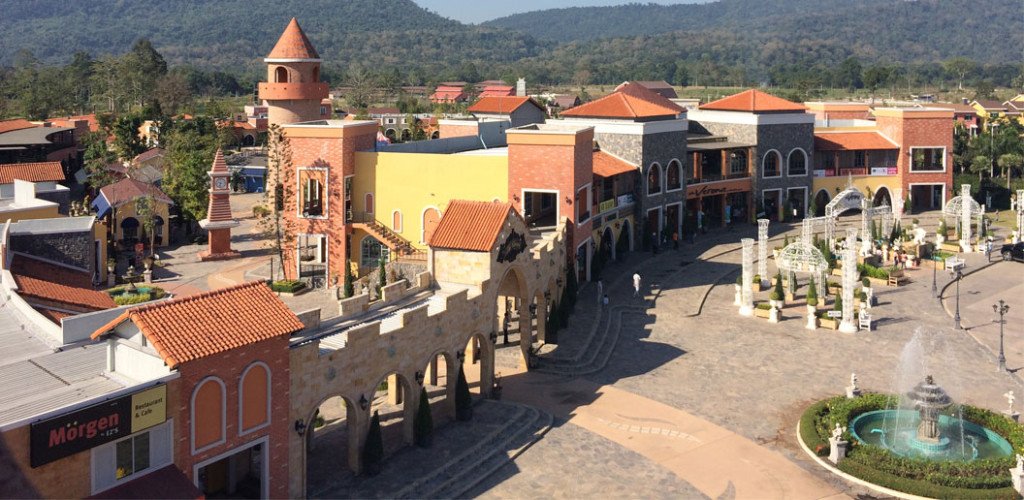– Hence from Verona art thou banishèd. Be patient, for the world is broad and wide.
– There is no world without Verona walls but purgatory, torture, hell itself. Hence “banishèd” is banished from the world, and world’s exile is death. Then “banished.” – Conversation between Friar Lawrence and Romeo in Romeo and Juliet
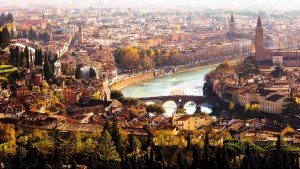 Italy has one of Europe’s richest histories in a vast array of fields. From the arts of painting, architecture or music, to the bellicose tales of confronted city states longing for power hegemony. From literature and poetry of the likes of Dante, to realist discourse in the form of Machiavelli. Playwrights and novelists, philosophers and scientists, all have been immortalized within the timeless beauty of Italy’s various legendary cities. Of those many playwrights, the most iconic one is without a doubt William Shakespeare. Shakespeare, who lived at the height of Renaissance, was enamoured by this magnificent place and set thirteen of his plays there. There is one particular tragedy amongst those however, which embodies the essences of love, heartbreak, passion and longing: Romeo and Juliet. Set in the marvelous city of Verona, it is one of the most lauded and well regarded works from the playwright.
Italy has one of Europe’s richest histories in a vast array of fields. From the arts of painting, architecture or music, to the bellicose tales of confronted city states longing for power hegemony. From literature and poetry of the likes of Dante, to realist discourse in the form of Machiavelli. Playwrights and novelists, philosophers and scientists, all have been immortalized within the timeless beauty of Italy’s various legendary cities. Of those many playwrights, the most iconic one is without a doubt William Shakespeare. Shakespeare, who lived at the height of Renaissance, was enamoured by this magnificent place and set thirteen of his plays there. There is one particular tragedy amongst those however, which embodies the essences of love, heartbreak, passion and longing: Romeo and Juliet. Set in the marvelous city of Verona, it is one of the most lauded and well regarded works from the playwright.
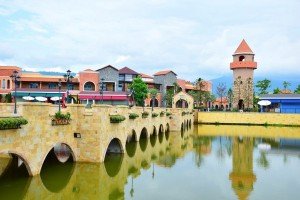 How does this connect to Thailand? Very simple: The province of Prachinburi has constructed a smaller replica of the Italian city of Verona, with wonderful details which are surprisingly similar to those found in the northern Italian destination. This month, HOT Magazine takes you to the historical city of Verona Italy and contrasts it with the fantastic replica of it at Tub Lan, Prachinburi, approximately two hours from Bangkok.
How does this connect to Thailand? Very simple: The province of Prachinburi has constructed a smaller replica of the Italian city of Verona, with wonderful details which are surprisingly similar to those found in the northern Italian destination. This month, HOT Magazine takes you to the historical city of Verona Italy and contrasts it with the fantastic replica of it at Tub Lan, Prachinburi, approximately two hours from Bangkok.
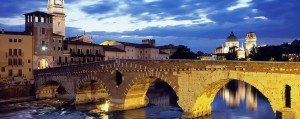 Verona is located in Veneto, a region famous for its capital Venice, and the grandeur of its canals and architecture. But it has nothing to envy, as its own architectural marvels have been bestowed a World Heritage Site award by UNESCO.
Verona is located in Veneto, a region famous for its capital Venice, and the grandeur of its canals and architecture. But it has nothing to envy, as its own architectural marvels have been bestowed a World Heritage Site award by UNESCO.
We focus first on the Verona Gate, known too as the Porta Borsai. This gate has its historical emergence in the first century A.D. over two thousand years ago, and is thought to have been remodelled over a previous existing structure. Emperor Gallienus’ rule saw a further remodelling of it in the third century and small modifications have been made to it since. Made out of limestone, the gate was known in Roman times as Porta Lovia and was located by a now inexistent temple which was made in honour of the god Jupiter. The gate at the Tub Lan does not have a temple either, but is well replicated and has a very similar feeling to the original Italian gate.
 Amongst the most interesting and iconic sites of Verona is the Casa di Giulietta, which translates to “Juliet’s House”. The house was built in the early fourteenth century in the street Via Cappello. It claimed to be Juliet’s residence due perhaps to the similarity of the balconies that Shakespeare described throughout the story in the play. The house today sits empty, other than the statue of Juliet, in the courtyard and the legendary balcony from which the interactions with Romeo took place. The statue, which is made out of bronze, is arguably the most visited site in the town and is worn on the cavity of its chest, due to so many people stroking it. The reason behind it lies in the tradition which states that upon touching the right breast of the figure, whoever does so will be granted good luck and wonderful fortune in relationships and love. On the entrance, one can witness a collective of thousands of names written across the wall. This is known as the Juliet wall and it is thought that doing so in couple, will bind the two fated people in eternal unison. Some people go a step further and cling what goes on to become a collective of over a thousand small love letters stuck on the walls. Eventually there are so many stuck letters that employees have to take them down in order to make space for more on a regular basis. The statue at Tab Lan’s replica of the monument to Juliet is yet to be worn bare, but nobody is to say that the tradition will not pick up in Thailand too!
Amongst the most interesting and iconic sites of Verona is the Casa di Giulietta, which translates to “Juliet’s House”. The house was built in the early fourteenth century in the street Via Cappello. It claimed to be Juliet’s residence due perhaps to the similarity of the balconies that Shakespeare described throughout the story in the play. The house today sits empty, other than the statue of Juliet, in the courtyard and the legendary balcony from which the interactions with Romeo took place. The statue, which is made out of bronze, is arguably the most visited site in the town and is worn on the cavity of its chest, due to so many people stroking it. The reason behind it lies in the tradition which states that upon touching the right breast of the figure, whoever does so will be granted good luck and wonderful fortune in relationships and love. On the entrance, one can witness a collective of thousands of names written across the wall. This is known as the Juliet wall and it is thought that doing so in couple, will bind the two fated people in eternal unison. Some people go a step further and cling what goes on to become a collective of over a thousand small love letters stuck on the walls. Eventually there are so many stuck letters that employees have to take them down in order to make space for more on a regular basis. The statue at Tab Lan’s replica of the monument to Juliet is yet to be worn bare, but nobody is to say that the tradition will not pick up in Thailand too!
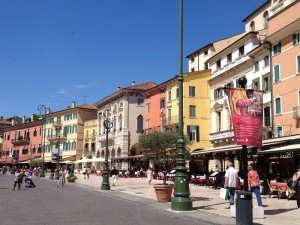 Il Lago di Garda is one of the most pristine and beautiful sites located at a mid-point between Brescia and Verona, and is an iconic location for those who wish to spend some time by the water. The Garda is the largest lake in Italy, spanning a length of over fifty kilometres, a width of almost seventeen in its largest extremity and a depth of almost three hundred and forty six metres. North of the lake are a collective of mountain ranges whilst plots of habited land are found in the south, such as the town of Sirmione, a popular destination amongst those who venture there.
Il Lago di Garda is one of the most pristine and beautiful sites located at a mid-point between Brescia and Verona, and is an iconic location for those who wish to spend some time by the water. The Garda is the largest lake in Italy, spanning a length of over fifty kilometres, a width of almost seventeen in its largest extremity and a depth of almost three hundred and forty six metres. North of the lake are a collective of mountain ranges whilst plots of habited land are found in the south, such as the town of Sirmione, a popular destination amongst those who venture there.
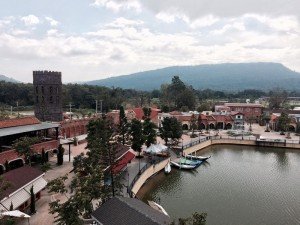 The Lake Garda at the Tab Lan is of course not fifty kilometres in length, but is equally fantastic and combines greatly with another replicated structure, the Castelvecchio. The world, which literally translates into “Old Castle” is the most prominent and salient construction of the dynasty ruled by the Scaliger in the thirteenth century. In Italy, it is located on what was previously the fortress of a Roman city and was built with the purpose of protecting the various rulers who resided there from neighbouring city states such as that of Venice.
The Lake Garda at the Tab Lan is of course not fifty kilometres in length, but is equally fantastic and combines greatly with another replicated structure, the Castelvecchio. The world, which literally translates into “Old Castle” is the most prominent and salient construction of the dynasty ruled by the Scaliger in the thirteenth century. In Italy, it is located on what was previously the fortress of a Roman city and was built with the purpose of protecting the various rulers who resided there from neighbouring city states such as that of Venice.
Napoleon Bonaparte resided in it briefly during the Napoleonic wars and it was duly refortified by other forces that took it over and adorned it with canons and stronger walls. A bridge was built at the site which went over the Adige River and at the time was the largest bridge in the world, spanning at almost fifty metres in length. Made out of rich red coloured bricks, it bears the legend of the designer having been awarded a sword which had previously belonged to Saint Martin. Other stories tell that he came to the inaugural ceremony mounted on a horse, to gallop away in case it crumbled. The Castelvecchio at Tab Lan is wonderfully replicated and combines its bridge across the lake, which allows you to access the two sides of the city with ease in order to visit all the other sites.
 Another wonderful site of the city of Verona is the Torre dei Lamberti, rising over an imperious eighty four metres in height. Building it was an iconic struggle that began in the twelfth century, after it was stuck by lightning half way through the construction work, after which its restoration was delayed until the fifteenth century across a period spanning sixteen years. A prominent clock was added to the face of the tower in the eighteenth century, after which it has remained untouched. The tower’s two bells have been used across the years for specific purposes. The first called Marangona is the smallest of the two and is rung during fires and announces work times. The larger one is called Regno and was formerly used to invoke the populace to arms or to invoke city councils. The Lamberti tower at the Tub Lan is not as high as the original but is just as charming, granting the opportunity to feel the essence of the city of Verona.
Another wonderful site of the city of Verona is the Torre dei Lamberti, rising over an imperious eighty four metres in height. Building it was an iconic struggle that began in the twelfth century, after it was stuck by lightning half way through the construction work, after which its restoration was delayed until the fifteenth century across a period spanning sixteen years. A prominent clock was added to the face of the tower in the eighteenth century, after which it has remained untouched. The tower’s two bells have been used across the years for specific purposes. The first called Marangona is the smallest of the two and is rung during fires and announces work times. The larger one is called Regno and was formerly used to invoke the populace to arms or to invoke city councils. The Lamberti tower at the Tub Lan is not as high as the original but is just as charming, granting the opportunity to feel the essence of the city of Verona.
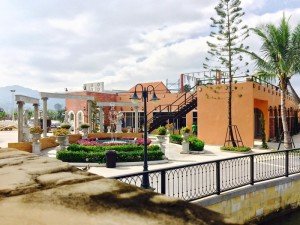 The Verona at Tub Lan is a wonderful place to which to go if your aim is to explore this iconic city over a weekend but do not wish to leave the country. The replica has been very successfully created and other than perhaps Italy’s northern weather, it offers a charming and comparable experience to the visitor. If you have nothing to do this month, we recommend that you visit, perhaps you will then understand why in addition to Juliet’s presence, Romeo asserted that there was “no world without Verona.”
The Verona at Tub Lan is a wonderful place to which to go if your aim is to explore this iconic city over a weekend but do not wish to leave the country. The replica has been very successfully created and other than perhaps Italy’s northern weather, it offers a charming and comparable experience to the visitor. If you have nothing to do this month, we recommend that you visit, perhaps you will then understand why in addition to Juliet’s presence, Romeo asserted that there was “no world without Verona.”


